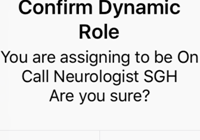When hospitals pursue Magnet Recognition®, it’s a herculean effort. Building, and then telling, the right Magnet story requires better tools, processes and system-wide enhancements that optimize operations and—most importantly—improve patient outcomes.
The lift is so heavy that many facilities onboard and support a full-time employee whose sole responsibility is to craft and execute a successful application for their Magnet Recognition. But what exactly makes that application resonate with program reviewers? And more importantly, what does it take to get—and maintain—Magnet designation?
Sticking closely to the Magnet Model—a framework originating from the American Nurses Credentialing Center’s proven Forces of Magnetism—is key. Composed of five parts, the model requires that facilities demonstrate their commitment to nursing practice and research. However, when completing that application, anecdotes aren’t enough: You need the evidence, metrics and tools to back up whatever claims you make in your Magnet Recognition story.
That’s where MH-CURE® comes in. As an enterprise-wide clinical communication and collaboration (CC&C) solution with a track record of improving HCAHPS scores, staff satisfaction and other outcome measures, MH-CURE has appeared in many hospitals’ Magnet stories for the tool’s ability to support communication across disciplines.
In fact, 23 Mobile Heartbeat customer facilities are Magnet Recognized, and several of these customers have included MH-CURE in their Magnet stories, says Grace Walker, RN, nurse and clinical consultant at Mobile Heartbeat. As part of her role, she helps organizations showcase value for the tool.
“We help them understand exactly how MH-CURE is going to transform their environment and their clinical and operational workflows. By looking at efficiency gains and improvements in patient outcomes and staff satisfaction, we can evaluate specific changes within their organization, which leaders use to incorporate into their Magnet story.”
Building MH-CURE Into Your Magnet Recognition Story
Quantifying the benefits of MH-CURE’s impact on a hospital’s operational and clinical environment can range from increased HCAHPS scores to measures like patient length of stays, nurse call response times, reductions in noise and step decreases.
Walker’s team has even gone so far as to helping one customer craft an Institutional Review Board (IRB) application to evaluate the impact of MH-CURE in their environment as part of a one-year study. The team included the results of that study in their Magnet Recognition application.
“We were able to measure how staff satisfaction improved, as well as how their use of the technology improved clinical outcomes,” Walker added.
The patient-centric design of MH-CURE—including Dynamic Care Team™, which pulls together the key care team members for any given patient, making them easily identifiable and accessible—can also inform a Magnet story for their effect on shoring up workflows and helping clinicians get the right information to the right contact at the right time.
“Across the hospital, staff and providers no longer have to waste time trying to find people. They can instead contact anyone associated with the patient’s care, whether that’s a social worker, physician, nurse or anyone else,” Walker said. “That direct line of interdisciplinary communication facilitates faster, more accurate coordination of care and treatment plans.”
Other capabilities, such as InterApp Launch Points™ to third-party apps for uses like clinical reference, , enable clinicians to more easily access resources and data without the need to pass through another password-protected gate. Each of those instances can save minutes that over time amount to significant workflow improvements deserving of inclusion in a Magnet application.
“With Mobile Heartbeat and InterApp Launch Points, nurses don’t even have to leave the patient’s bedside to look up a medical reference material,” Walker said. “If a nurse needs to learn more about a medication’s administration or interactions, for example, they can just look that up instantly from MH-CURE, without interruptions to the patient’s care.”
Where MH-CURE Fits In
All told, each of those features helps portray MH-CURE as a transformative technology within the overall Magnet framework—but which sections specifically does MH-CURE speak to?
Nearly all of them, Walker says. Among the Forces of Magnetism, tools such as MH-CURE can showcase a marked impact on nursing quality, leadership and improvement. For the large part, that affects these six forces:
- Force #1: Quality of Nursing Leadership, with regard to how selecting a strategy of streamlined communications can optimize staff direction and set the tone for interdisciplinary collaboration
- Force #6: Quality of Care, in terms of how a CC&C tool improves the patient experience and care delivery
- Force #7: Quality Improvement, due to MH-CURE’s effect on optimizing clinical and operational processes
- Force #9: Autonomy, because it gives nurses the ability to get the information they need to do their jobs
- Force #11: Nurses as Teachers, in terms of how MH-CURE can enable clinicians to make the most of teachable moments with real-time communications, utilize technology at the bedside to train fellow clinicians and deliver education about medications and procedures directly to patients and families
- Force #13: Interdisciplinary Relationships, because of the platform’s department-agnostic structure that connects all clinicians across the enterprise
As a whole, those forces fall within four Magnet Model components:
- Transformative Leadership
- Exemplary Professional Practice
- New Knowledge, Innovation & Improvements
- Empirical Quality Results
Making Metrics Come to Life
The final model component—that of empirical quality results—leans heavily on both quantitative and qualitative data, something that MH-CURE can amply provide thanks to CURE Analytics™. With those insights, hospitals can showcase how clinicians use the technology day-to-day to prove out interdisciplinary adoption of the tool. Additionally, centers often choose to deploy surveys to get a pulse on staff satisfaction and confidence in the technology, as well as perception on its effectiveness and safety.
These metrics can set your application apart from the pack because, at the end of the day, the Magnet Recognition Program is about showcasing the caliber and commitment of a facility’s nurses. Any tool that helps clinicians do that better and faster—with the data to prove it—makes all the difference.
“You want to showcase how efficiently and accurately the work gets done, as well as the power of the healthcare provider at the bedside,” Walker said. “Enabling them to access the information they need, across all communication cycles, is what amounts to safe, effective care delivery.”
The Road to Re-Designation
Of course, once you achieve Magnet designation, the work is far from over. Sometimes, maintaining Magnet status can be more difficult than securing the original recognition.
“As soon as your organization achieves Magnet Recognition, you celebrate because it’s a big deal,” Walker said. “You put out announcements to the newspaper, celebrate both internally and externally, and it creates a lot of buzz within the local medical community. Despite this, within a month or two, you’ve already returned to the application mindset. With an extensive application period, and formal re-designation every four years, you’ll want to start thinking of your hospital’s next Magnet story.”
For that, Mobile Heartbeat can continue to offer value as a partner. Once recognized, we help supply customers with resources to reveal and inform clinical and operational impact stories for future applications. And with the rapid evolution of technology in healthcare, you can bet you’ll have some meaningful stories to tell.




